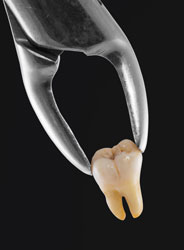 Dental emergencies are common and it’s essential to know what to do when one happens to you.
Dental emergencies are common and it’s essential to know what to do when one happens to you.
This includes taking the time to understand what constitutes a dental emergency and what to look out for. Here is a detailed breakdown of what a dental emergency entails and what you should do as soon as you are in such a situation.
What Is A Dental Emergency?
A dental emergency is any dental condition requiring immediate professional assistance to avoid further pain, discomfort, and damage to the teeth.
Examples of this can include:
- Toothaches
- Broken Teeth/Knocked Out Teeth
- Swollen Jaw
- Bleeding Gums
- Missing Filling
- Exposed Nerve
Anything surrounding these conditions should be addressed as soon as possible by a qualified dentist. They will know what to do to regulate the pain and make sure the teeth are in the condition they need to be.
How To Deal With A Dental Emergency
1. Book An Appointment With The Dentist Right Away
The first thing you are going to want to do is to book an appointment with a dentist. Some dentists work around the clock and/or are willing to book emergency appointments. They will prioritize you due to the nature of the condition you’re in.
This is ideal since you are going to want treatment as soon as you can get it.
2. Rinse The Mouth
You are also going to want to focus on controlling the bleeding if that is a concern. This can be done by rinsing the mouth with water. Just make sure to rinse gently and allow the water to dribble out as that is going to make sure you don’t aggravate the situation.
3. Use Gauze To Control Bleeding
If the bleeding is getting worse, it’s essential to use gauze to help control it. This is essential as that is one of the best ways to control how much you are bleeding. Pressing against it is going to help, but also placing it near the opening of the mouth is useful too.
Final Thoughts
These are the most important things a person should do when dealing with a dental emergency. The onset of pain can be sudden and you are going to want to numb it as best as you can until a dentist gets to see what’s going on.
By following the steps listed here, you will be able to take control of the situation before the dentist sees what’s going on.
